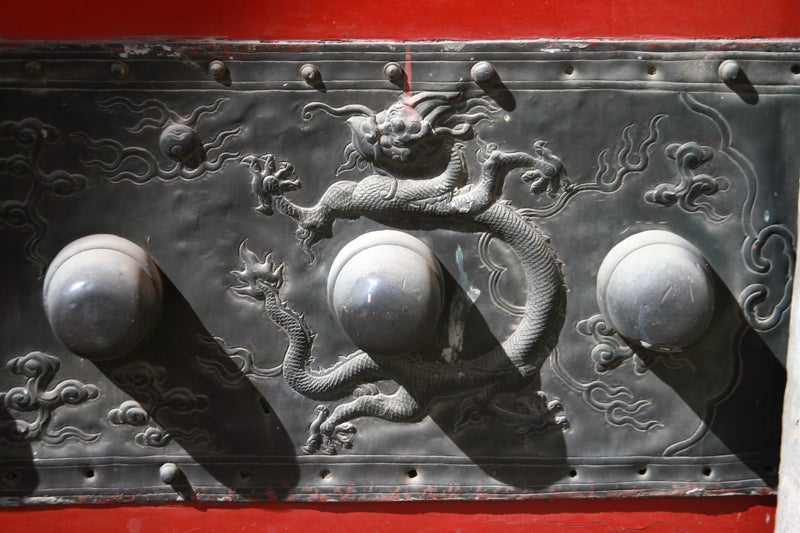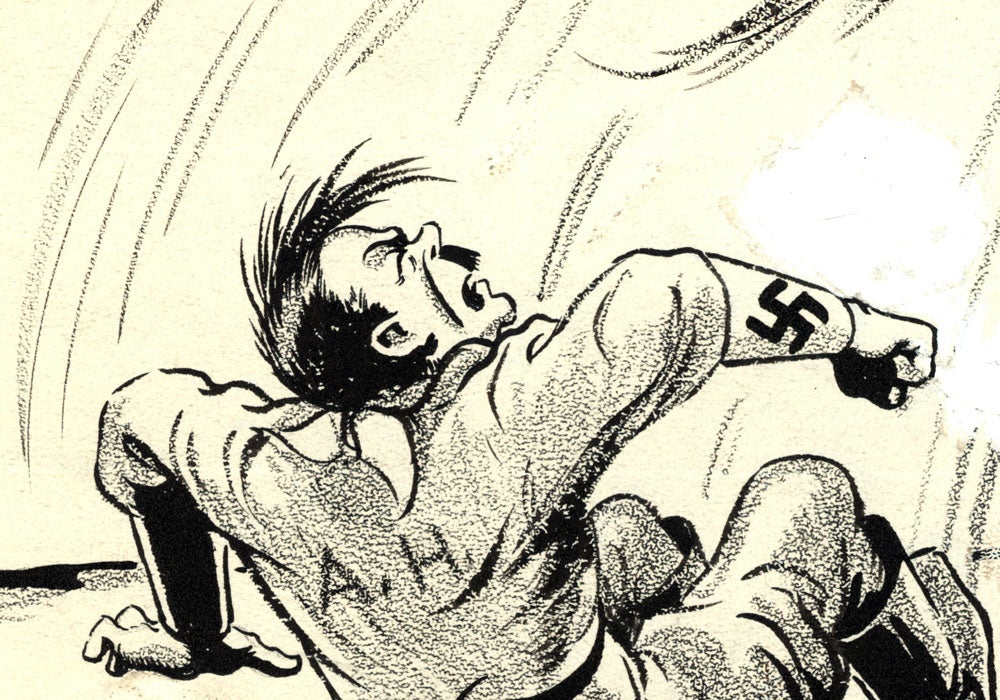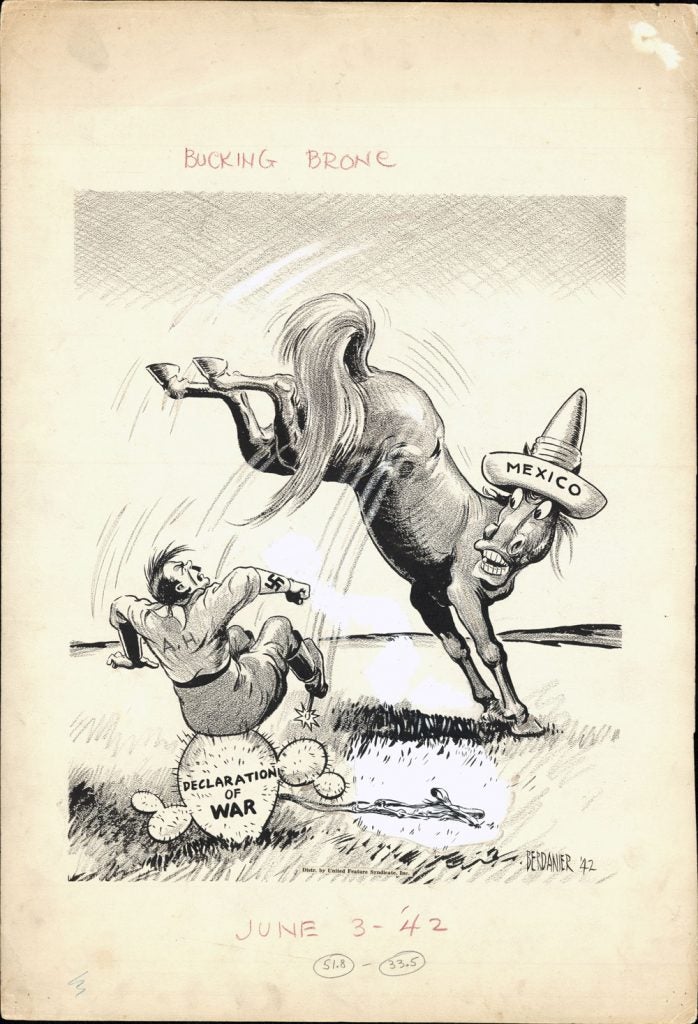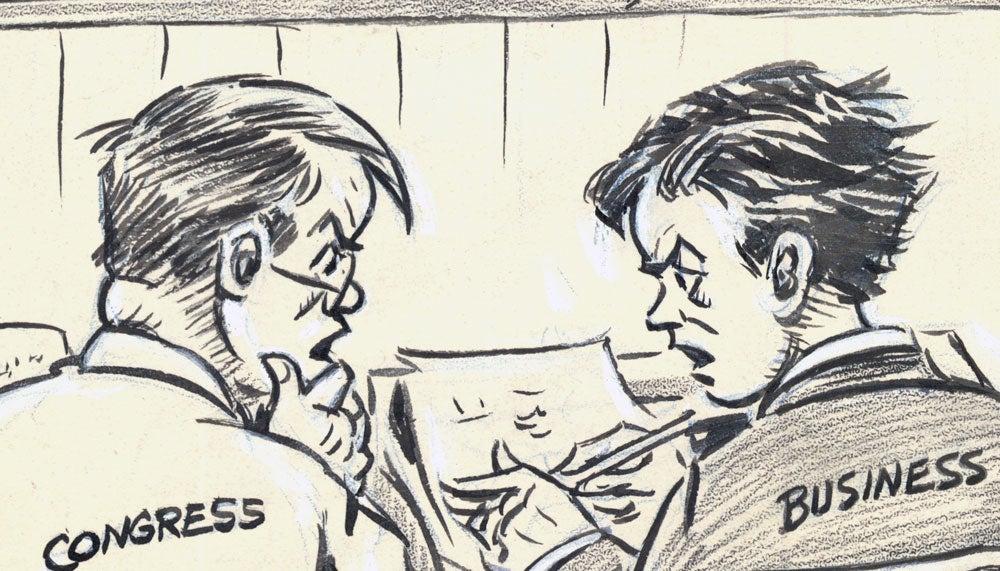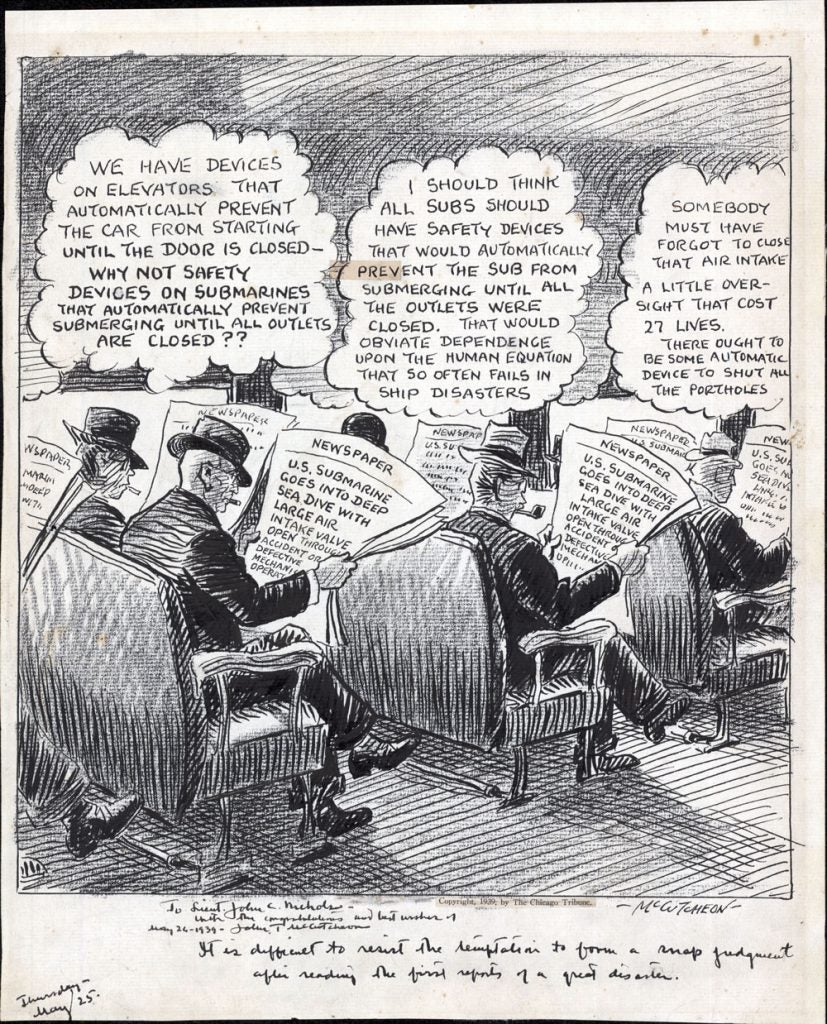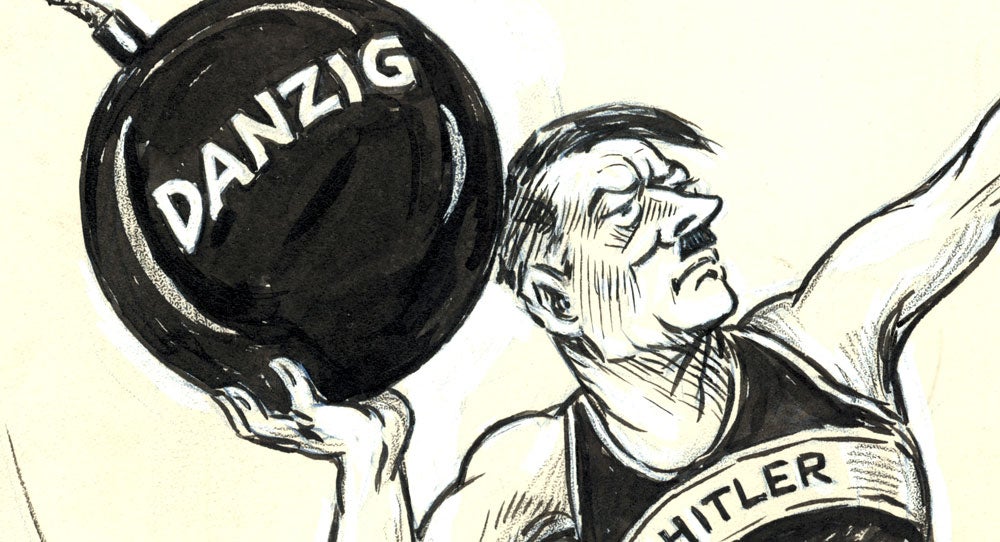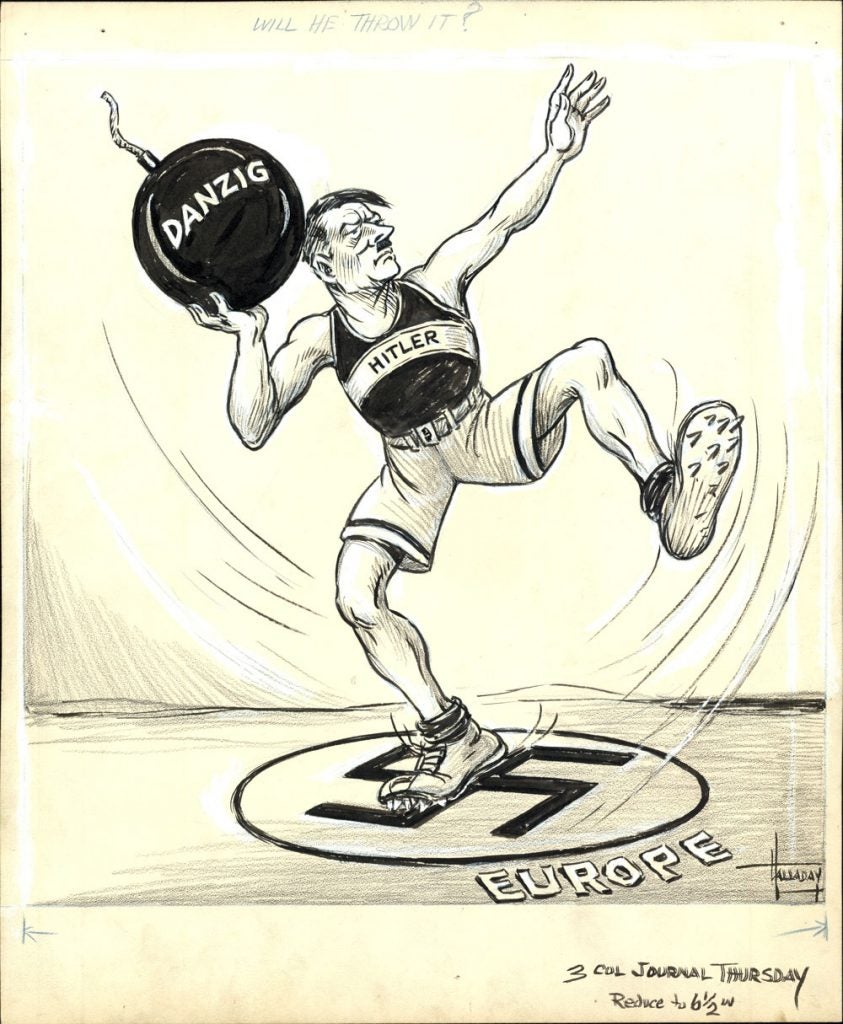
“There’s Your Answer, Adolph.” (November 27, 1942) 11/10
by Wallace Heard Goldsmith (1873-1945)
13 x 15.5 in, ink on board
Coppola Collection
Goldsmith was a Boston institution, working over his long career at the Herald, the Post, and the Globe. This editorial cartoon is from his 25-year period at the Post.
At the turn of the century, the Boston Herald just couldn’t make up its mind whether it wanted to run a syndicate. Their homegrown comic section was born and died at least four different times. The Adventures of Little Allright came in the third version of their Sunday section and ran from March 6 to June 26 1904. There really wasn’t much to set the strip apart from any other kid strip — the starring kid saying “all right” a lot seems an almost ridiculously weak hook. Goldsmith took the dubious credit for this stinker. The strip was rebooted as Little Alright (the second ‘L’ was dropped), and ran from November 11 1906 to April 14 1907. He was well known for illustrating Oscar Wilde’s “The Canterville Ghost.”

After the Fall of France and the Armistice of 1940, France was divided in two zones, one occupied by the Germans, and the “Free Zone”. Officially, both zones were administered by the Vichy regime. The armistice stipulated that the French fleet would be largely disarmed and confined to its harbors, under French control. The Allies were concerned that the fleet, which included some of the most advanced warships of the time, might fall into enemy hands and so the British attacked the French Fleet at Mers-el-Kebir on July 3, 1940, and at the Battle of Dakar on September 23, 1940.
On November 8. 1942 the Allies invaded French North Africa. It is thought that General Dwight Eisenhower, with the support of FDR and Winston Churchill, made a secret agreement with Admiral François Darlan, commander of Vichy Naval forces, that Darlan would be given control of French North Africa if he joined the Allied side.
Hitler responded to the invasion by sending in his forces, with the intent of capturing the French fleet and turning it over to Italy. As the German and Italian troops closed in on the port of Toulon, a plan was already in place: turn them back; and if that did not work, scuttle the fleet.
The French played along, looking like it was strengthening its defenses against the Allies. On November 12, Darlan called for a declaration of defection.
German combat troops entered Toulon early on November 27. By about 5 AM, German tanks rolled through, and the lead French ship immediately transmitted the order “Scuttle! Scuttle! Scuttle!” by radio, visual signals and dispatch boat. French crews evacuated, and scuttling parties started preparing demolition charges and opening sea valves on the ships.
In the final accounting, 77 vessels were scuttled. Another 39 were damaged and disarmed. Some of the major ships were ablaze for several days, and oil polluted the harbor so badly that it would not be possible to swim there for two years.



